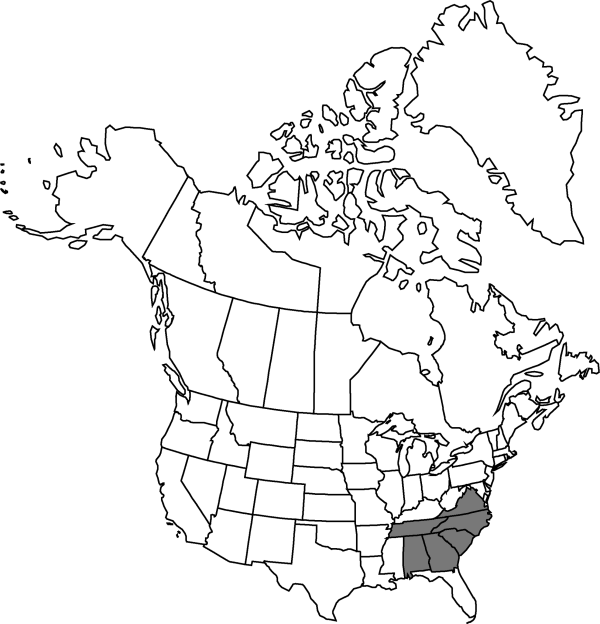Difference between revisions of "Phemeranthus mengesii"
Novon 11: 320. 2001.
Basionym: Talinum mengesii W. Wolf
FNA>Volume Importer |
FNA>Volume Importer |
||
| Line 26: | Line 26: | ||
|elevation=100-1000 m | |elevation=100-1000 m | ||
|distribution=Ala.;Ga.;N.C.;S.C.;Tenn.;Va. | |distribution=Ala.;Ga.;N.C.;S.C.;Tenn.;Va. | ||
| − | |discussion=<p>Most populations of Phemeranthus mengesii are diploid but a few scattered in western Georgia are tetraploid, probably the result of autopolyploidy (W. H. Murdy and M. E. B. Carter 2001).</p> | + | |discussion=<p>Most populations of <i>Phemeranthus mengesii</i> are diploid but a few scattered in western Georgia are tetraploid, probably the result of autopolyploidy (W. H. Murdy and M. E. B. Carter 2001).</p> |
|tables= | |tables= | ||
|references={{Treatment/Reference | |references={{Treatment/Reference | ||
| Line 56: | Line 56: | ||
|publication year=2001 | |publication year=2001 | ||
|special status= | |special status= | ||
| − | |source xml=https://jpend@bitbucket.org/aafc-mbb/fna-data-curation.git/src/ | + | |source xml=https://jpend@bitbucket.org/aafc-mbb/fna-data-curation.git/src/8f726806613d60c220dc4493de13607dd3150896/coarse_grained_fna_xml/V4/V4_1002.xml |
|genus=Phemeranthus | |genus=Phemeranthus | ||
|species=Phemeranthus mengesii | |species=Phemeranthus mengesii | ||
Revision as of 17:25, 18 September 2019
Plants to 4 dm; roots elongate, fleshily woody. Stems ± erect, usually branching. Leaves sessile; blade terete, to 7 cm. Inflorescences cymose, much overtopping leaves; peduncle scapelike, to 20 cm. Flowers: sepals deciduous, ovate, 3–4 mm; petals pink to rose-purple, obovate, 9–15 mm; stamens (40–)50–100; stigma 1, subcapitate. Capsules subglobose, sometimes trigonous, 3–4 mm. Seeds without arcuate ridges, 0.8–1 mm. 2n = 24, 48.
Phenology: Flowering Apr–Oct.
Habitat: Woods, glades, barrens, cliffs, outcrops, rocky banks, sandstone, granite, gneiss, rarely limestone
Elevation: 100-1000 m
Distribution

Ala., Ga., N.C., S.C., Tenn., Va.
Discussion
Most populations of Phemeranthus mengesii are diploid but a few scattered in western Georgia are tetraploid, probably the result of autopolyploidy (W. H. Murdy and M. E. B. Carter 2001).
Selected References
Lower Taxa
None.